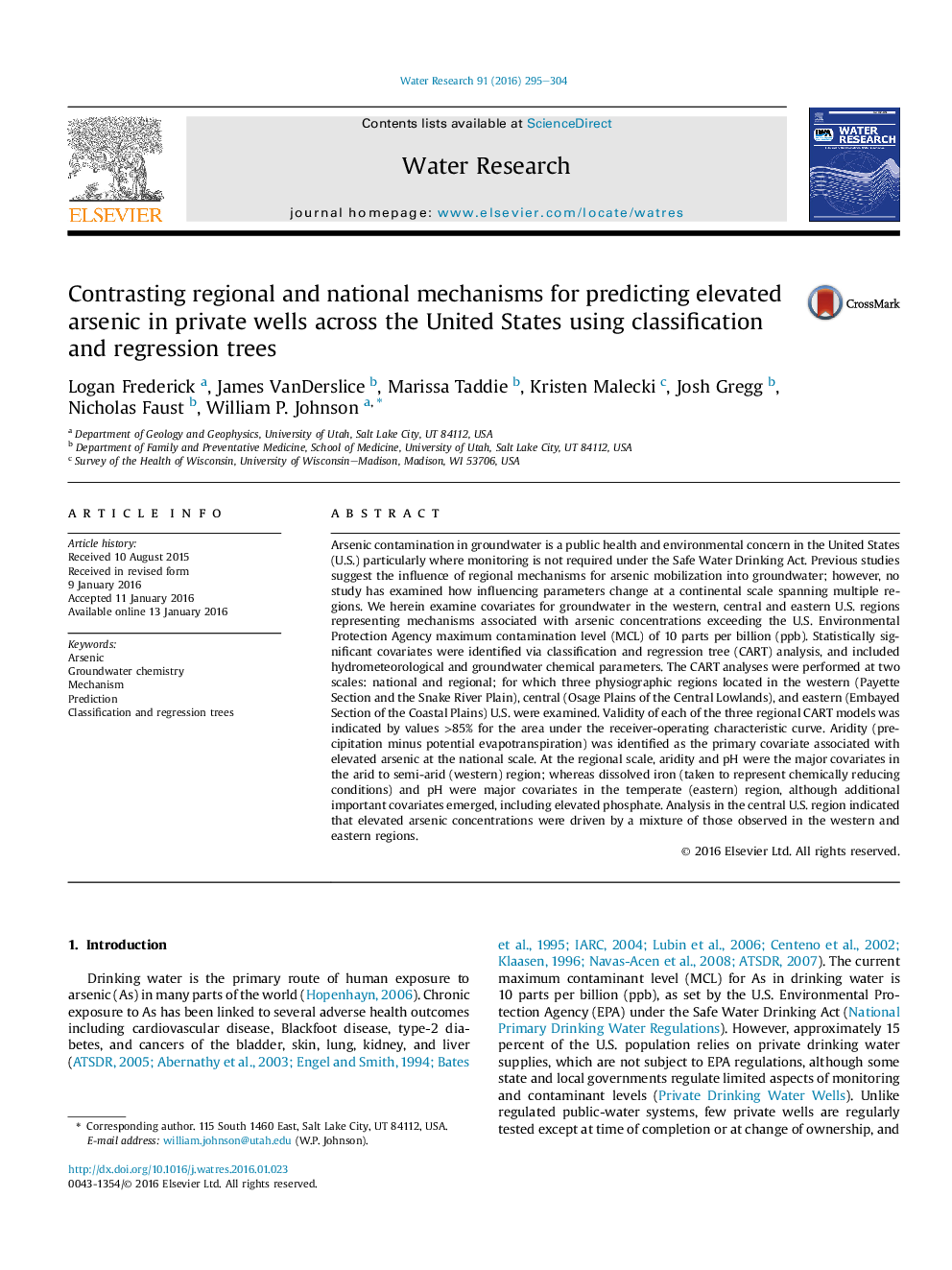| کد مقاله | کد نشریه | سال انتشار | مقاله انگلیسی | نسخه تمام متن |
|---|---|---|---|---|
| 6365171 | 1623077 | 2016 | 10 صفحه PDF | دانلود رایگان |
عنوان انگلیسی مقاله ISI
Contrasting regional and national mechanisms for predicting elevated arsenic in private wells across the United States using classification and regression trees
ترجمه فارسی عنوان
سازگاری با مکانیزم های منطقه ای و ملی برای پیش بینی آرسنیک بالا در چاه های خصوصی در سراسر ایالات متحده با استفاده از درختان طبقه بندی و رگرسیون
دانلود مقاله + سفارش ترجمه
دانلود مقاله ISI انگلیسی
رایگان برای ایرانیان
کلمات کلیدی
آرسنیک، شیمی آب زیرزمینی، مکانیسم، پیش بینی، طبقه بندی و رگرسیون درختان،
موضوعات مرتبط
مهندسی و علوم پایه
علوم زمین و سیارات
فرآیندهای سطح زمین
چکیده انگلیسی
Arsenic contamination in groundwater is a public health and environmental concern in the United States (U.S.) particularly where monitoring is not required under the Safe Water Drinking Act. Previous studies suggest the influence of regional mechanisms for arsenic mobilization into groundwater; however, no study has examined how influencing parameters change at a continental scale spanning multiple regions. We herein examine covariates for groundwater in the western, central and eastern U.S. regions representing mechanisms associated with arsenic concentrations exceeding the U.S. Environmental Protection Agency maximum contamination level (MCL) of 10 parts per billion (ppb). Statistically significant covariates were identified via classification and regression tree (CART) analysis, and included hydrometeorological and groundwater chemical parameters. The CART analyses were performed at two scales: national and regional; for which three physiographic regions located in the western (Payette Section and the Snake River Plain), central (Osage Plains of the Central Lowlands), and eastern (Embayed Section of the Coastal Plains) U.S. were examined. Validity of each of the three regional CART models was indicated by values >85% for the area under the receiver-operating characteristic curve. Aridity (precipitation minus potential evapotranspiration) was identified as the primary covariate associated with elevated arsenic at the national scale. At the regional scale, aridity and pH were the major covariates in the arid to semi-arid (western) region; whereas dissolved iron (taken to represent chemically reducing conditions) and pH were major covariates in the temperate (eastern) region, although additional important covariates emerged, including elevated phosphate. Analysis in the central U.S. region indicated that elevated arsenic concentrations were driven by a mixture of those observed in the western and eastern regions.
ناشر
Database: Elsevier - ScienceDirect (ساینس دایرکت)
Journal: Water Research - Volume 91, 15 March 2016, Pages 295-304
Journal: Water Research - Volume 91, 15 March 2016, Pages 295-304
نویسندگان
Logan Frederick, James VanDerslice, Marissa Taddie, Kristen Malecki, Josh Gregg, Nicholas Faust, William P. Johnson,
